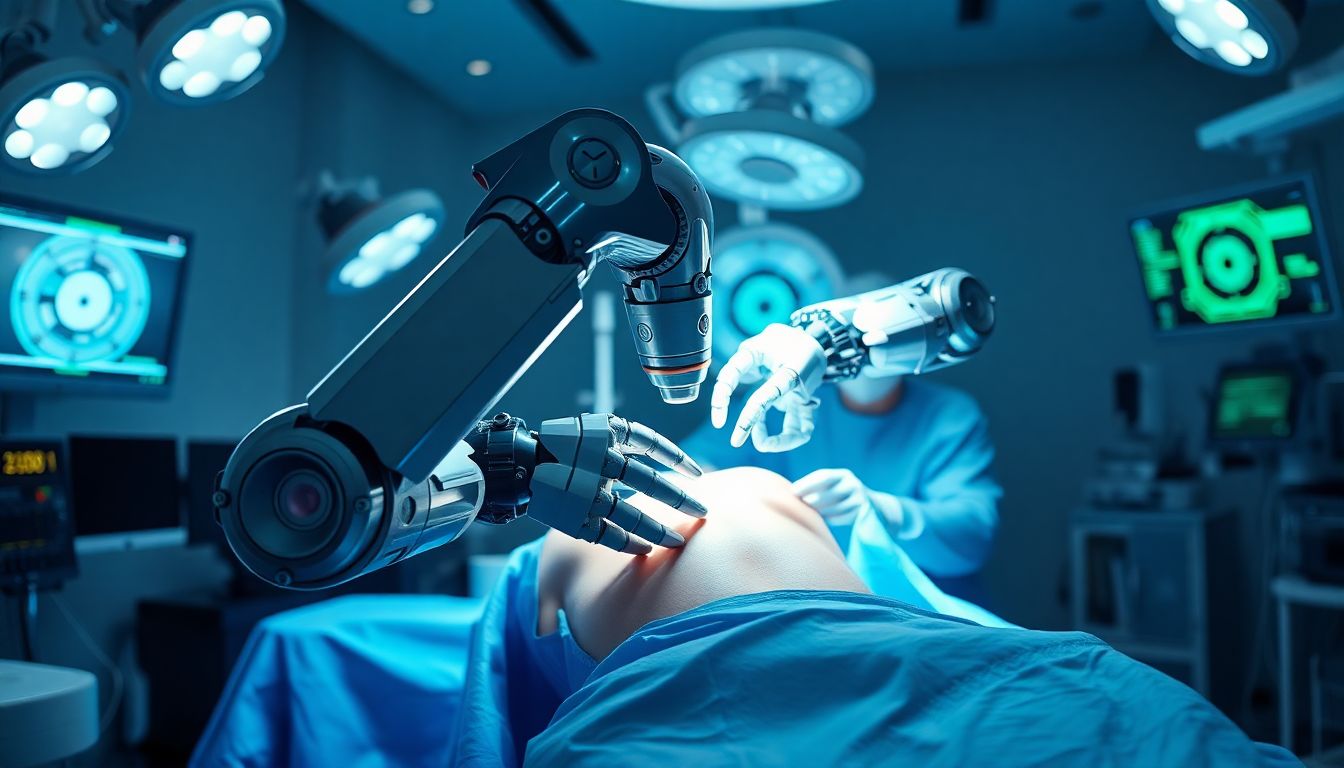How AI Surgery Robots Work
How AI Surgery Robots Work
AI surgery robots are complex machines designed to assist surgeons, not replace them. They enhance surgical procedures by combining advanced hardware and software.
Understanding the Core Components and Architecture
AI surgery robots consist of several key components: robotic arms with flexible movements, cameras for internal visualization, and sensors that provide real-time feedback to surgeons. The software directs the robot’s movements, processes data from cameras and sensors, and assists surgeons in making informed decisions.
AI Algorithms and Machine Learning
These robots are powered by AI algorithms, including computer vision for “seeing” and path planning for optimal movement. Machine learning allows the robot to improve over time by learning from each surgery it assists with, using data from previous operations.
Surgeon Control and Human-Machine Interface
Surgeons remain in full control of the robot, using a console to view what the robot sees and manipulate its arms. Feedback systems allow surgeons to feel what the robot is doing, ensuring a combination of human expertise and AI precision.
Advantages of Surgery Assisted by AI
AI surgery robots offer numerous benefits, including improved accuracy, less invasive procedures, and better ergonomics for surgeons.
Improved Accuracy and Precision
AI enhances surgical precision, enabling robots to make tiny, precise movements that reduce errors and protect surrounding healthy tissue. Real-time imaging and feedback further improve outcomes.
Less Invasive Procedures and Quicker Recovery
AI robots perform minimally invasive surgeries, making smaller incisions that result in less pain, scarring, and faster recovery times. This is particularly beneficial for procedures like hernia repair and gallbladder removal.
Better Ergonomics and Less Fatigue for the Surgeon
Robotic surgery reduces physical strain on surgeons, allowing them to work more comfortably and with less fatigue. This leads to fewer mistakes and better surgical outcomes.
AI Surgery Robots: Applications
AI surgery robots are being used in various types of surgeries, including general surgery, neurosurgery, and orthopedic surgery.
General Surgery
In general surgery, AI robots assist with procedures like hernia repair, gallbladder removal, and bowel resections, offering greater precision and less invasiveness.
Neurosurgery
In neurosurgery, AI robots help with brain tumor removal, spine surgeries, and deep brain stimulation, enhancing safety and precision in delicate procedures.
Orthopedic Surgery
AI robots assist in joint replacements (e.g., knees and hips) and bone repairs, improving accuracy and speeding up recovery times.
Challenges and Limitations
Despite their advantages, AI surgery robots face challenges related to cost, accessibility, and ethical considerations.
Cost and Accessibility
AI surgery robots are expensive to purchase, maintain, and operate. Training surgeons to use them adds to the cost, making them inaccessible to many hospitals and patients.
Technical and Ethical Considerations
Patient data security, potential bias in AI algorithms, and accountability for errors are critical concerns. Ensuring patient safety and ethical use of AI is paramount.
Regulatory Hurdles
AI surgery robots must undergo rigorous testing and approval by regulatory bodies to ensure they are safe and effective for use in medical procedures.
The Future of AI in Surgery
The future of AI surgery robots is promising, with advancements in autonomy, integration with other technologies, and impacts on surgical training.
More Autonomy and Automation
Future robots may perform more complex tasks autonomously, potentially carrying out entire surgeries with minimal human intervention. This requires careful consideration and regulation.
Integration with Other Technologies
AI robots could integrate with virtual reality (VR) and augmented reality (AR) to provide surgeons with enhanced visualization and real-time data during procedures.
Effect on Training of Surgeons and Future Workforce
AI will transform surgical training, requiring surgeons to learn new skills. Training programs and healthcare workforce strategies will need to evolve to accommodate these changes.
Conclusion
AI surgery robots have the potential to revolutionize medicine by making surgeries more precise, reducing recovery times, and improving patient outcomes. However, challenges like cost, accessibility, and ethical concerns must be addressed to ensure their responsible use. The integration of AI in surgery is here to stay, and its future is bright.

